The work of self-described designer and craftsman Alex Ahrens is anything but typical. Armed with a degree in engineering and a background in packaging design, the Austin-based maker turned a budding interest in woodworking into a business handcrafting fun, yet functional wooden objects in the shapes of various animals. His sleek, inventive Elephant Wall Hook, Bear Keys & Glasses Holder, and Shark Business Card Holder are all newcomers to our assortment.
As always, we’re excited to welcome such dedicated, thoughtful makers as Alex to the UncommonGoods family, where the creativity exhibited in his clever goods is so often celebrated. Read on for Alex’s insights on the power of organization and what being an artist really means—as well as how he turned his side hustle into a full-time gig.
When did you know you wanted to be an artist?
I don’t think I’ve ever thought that I wanted to be an artist—today, I usually go with “Designer & Craftsman!”—but I’ve always liked being creative, and I’ve always wanted to work for myself. I grew up with parents and a lot of family members who ran their own businesses, and I think I always romanticized the freedom that they had and wanted it for myself. Of course, there’s also a lot of uncertainty that comes with evading a more traditional job, which my family members didn’t let on about…
After graduating with an engineering degree, I worked at a packaging design firm for a few years, during which time I took up woodworking as a hobby. At work, I really loved the partnership between designing and prototyping, and physically creating my designs.
Eventually, I realized that it would make me happier to create and produce my own designs for products. I started crafting and selling my own designs online and in some local shops before finally deciding to pursue my “side hustle” full-time. I love it.
Although I don’t claim the “artist” label, doing this work has given me more appreciation for others who make a living through art; many people don’t think about the fact that you not only have to create the art, but also work with material and packaging suppliers, manage clients and do customer service, take care of marketing and accounting, and fulfill orders.
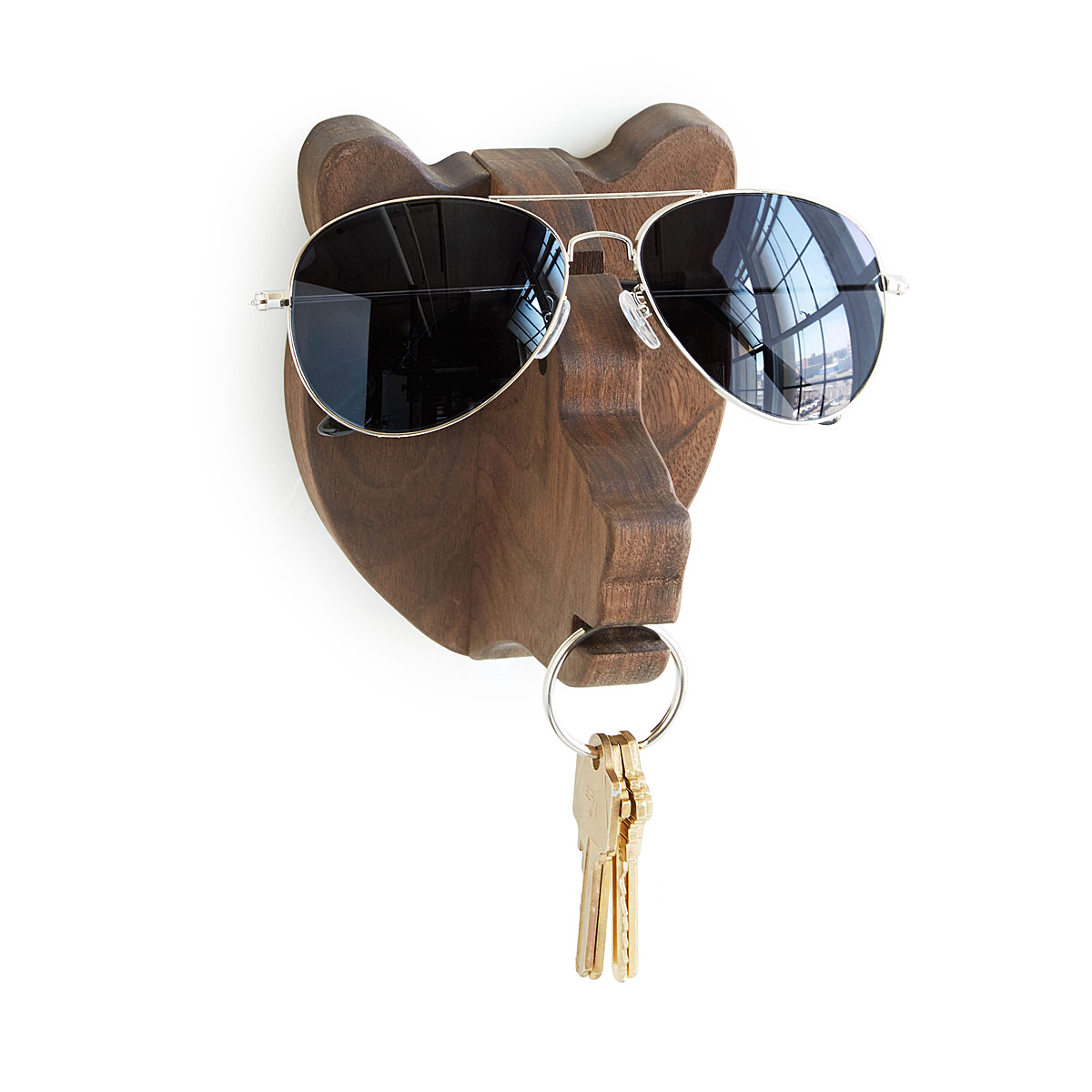
What was the most exciting thing about becoming a professional artist?
The most exciting thing is being completely in control of how I spend my day, but making sure I take care of everything that needs to be taken care of makes that the most stressful part, too. To help with that, every evening I try to make a brief list of the things I want to achieve the next day, personally, socially, and for business, and I set a general flow of how I want to do those things.
It kind of blurs the line between working and not working, and as a result I always tend to feel like I’m doing both, but I like the consistency of it. I’m always working to achieve the things that I need to achieve in order to live my life. It also lets me move from one to-do to the next without having to stop and think about what I should be doing next.
I also really enjoy meeting other artists and makers and soaking up creativity through that community. Whether it’s at the shared workshop I frequent, the shops in which I sell my designs, or craft shows, it’s always great to meet with others who are in the “maker” community and trade ideas.
What does your typical day in the studio look like?
Every morning, I wake up, feed the cat, make some coffee, and get all of the orders that came in the day before ready for shipment. From then on, it’s a toss-up. Some days, I head to a shared workshop where I produce stocking orders or work on prototypes for new designs. Other days, I’m focused at my home shop and studio, sanding and finishing parts and packing them up for inventory (or for orders from UncommonGoods!).
When I need a break from production, I can most often be found picking through the stacks at the lumberyard, driving around re-stocking local shops and taking the opportunity to visit favorite restaurants or coffee shops across town, and talking about big ideas with other like-minded individuals at the workshop.
And then all the little things… answering emails, printing instructions cards, preparing packaging parts, petting the cat, bagging hardware, and sweeping up sawdust!
Is there a trinket, talisman, or other inspirational object you keep near? If so, what is it and what does it mean to you?
I have a drawer in my desk full of half-finished prototypes that (nags at me and) inspires me for the future of where I’d like to take my work. These are usually the ideas I’m tossing around in my head while I do some of the more repetitive work.
Otherwise, I spend a lot of time in my home studio, and ever since I’ve transitioned to being full-time self-employed, I’ve worked to make my entire home a place that reflects my personality and in which I enjoy spending time.
As far as setting the mood, I’ve delved deep into the world of podcasts to keep me engaged and learning while I work. I range between episodes of news and pop culture, to comedians discussing quirky facts about science and nature, to podcasts exploring more emotional human stories. I save the latter for when I’m at my home studio, in case something gets in my eye…
Imagine you just showed your work to a kindergartner for the first time. What do you think they would say?
I’d hope it would be, “Can I have one?”
What quote or mantra keeps you motivated?
I made a sign for my backyard workshop that says “Everything in its place.” I read the book The Life-Changing Magic of Tidying Up a couple of years ago, and one concept I really liked from it was that all the objects in your home should have a place to go when you’re done using them. I’ve tried to apply that principle to my work. In a business with many different products, tools, packaging components, and works-in-progress, it’s important for the sake of time and sanity to keep things straight. I try to keep dedicated shelves for stacks of finished products, cabinets for different types of packaging, or even just designated spots on the floor of my shop to make stacks of different yet-to-be-finished product parts (Marie Kondo probably wouldn’t be as thrilled with that last one).
Keeping an organized shop and a planned production schedule keeps me focused on the work that needs to be done and helps me avoid the stress of trying to keep up with orders if a new project, opportunity, or whim comes along.
I’m also fond of a quote I came across years ago—“The art of simplicity is a puzzle of complexity.” I always try to create designs that are simple in aesthetic, functionality, and user experience. To balance all of these things can be surprisingly difficult.
When you’re designing an object to solve a problem or serve a purpose, it’s easier to add a bunch of parts that all fit one function and to have a lot of nails or glue holding it together, but the real joy is in taking the time to approach a problem so that you solve it in an elegantly simplistic way.

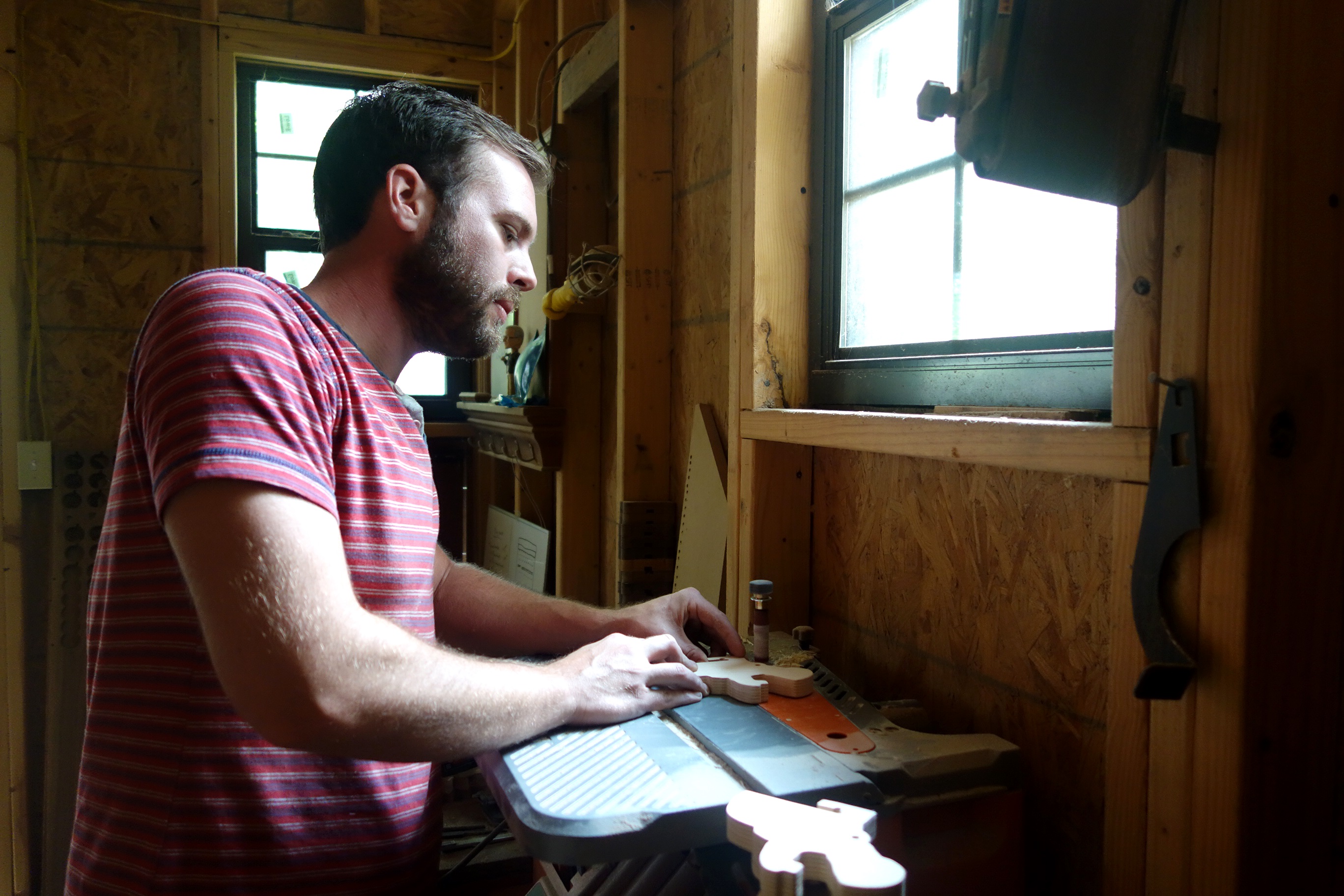
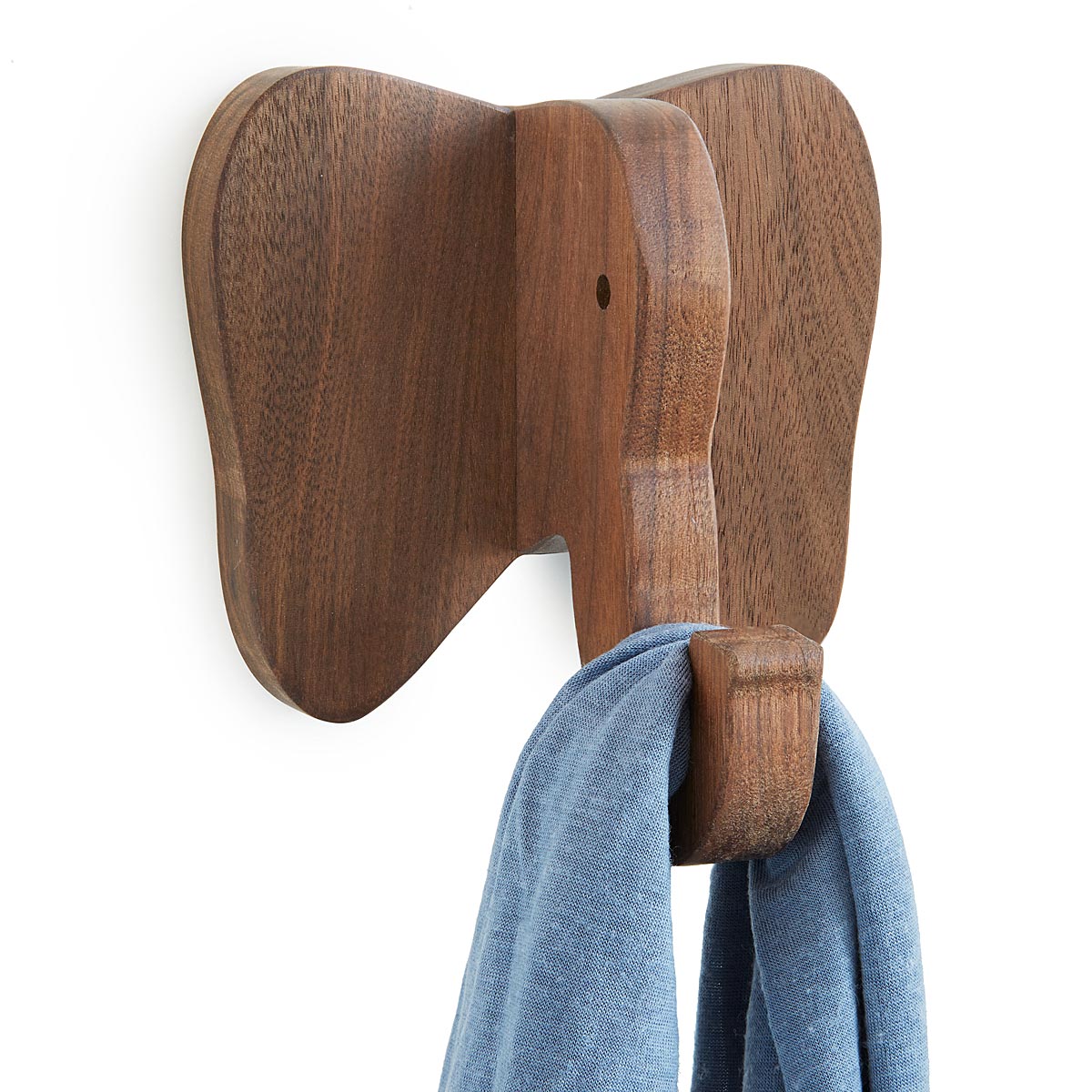
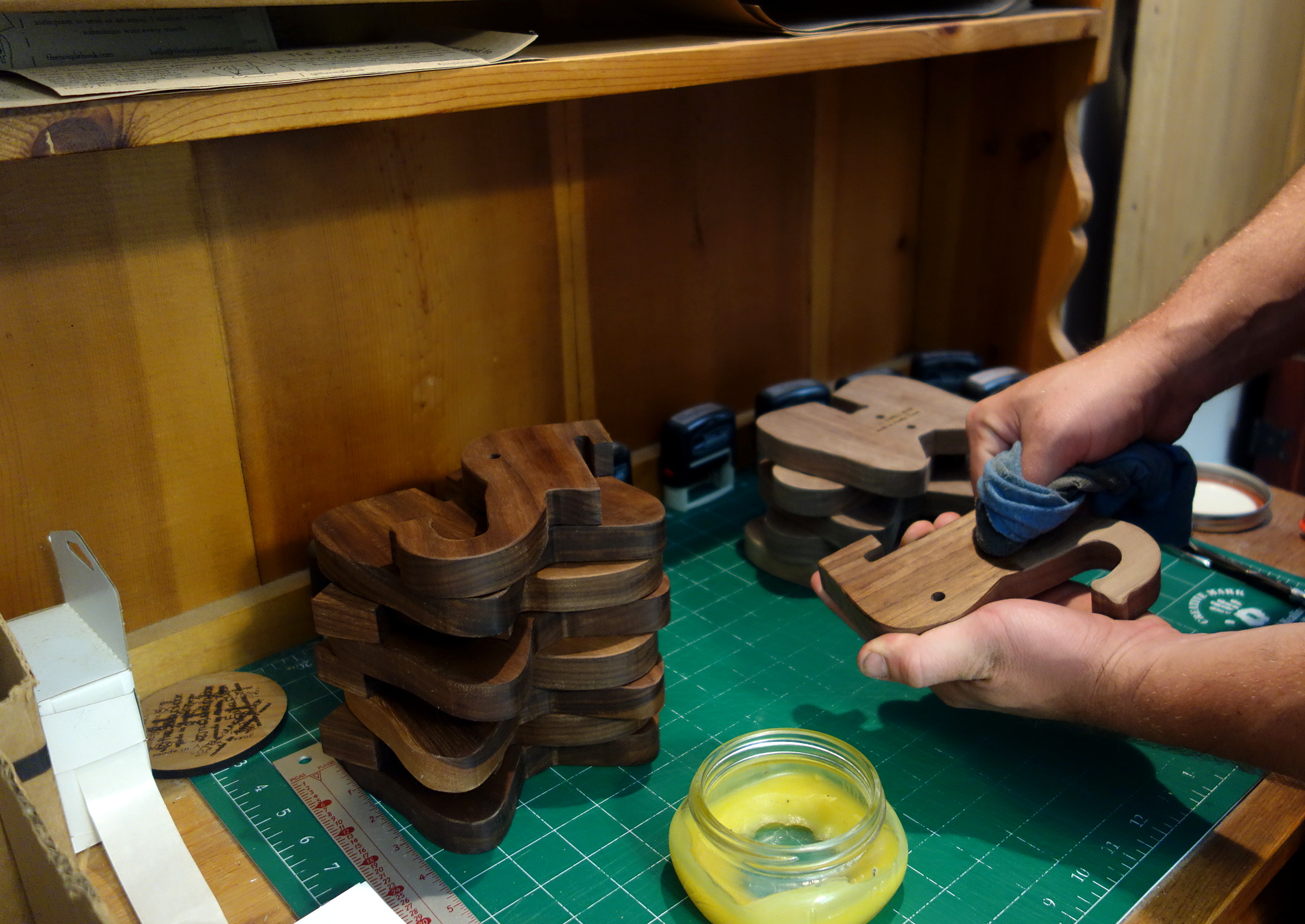
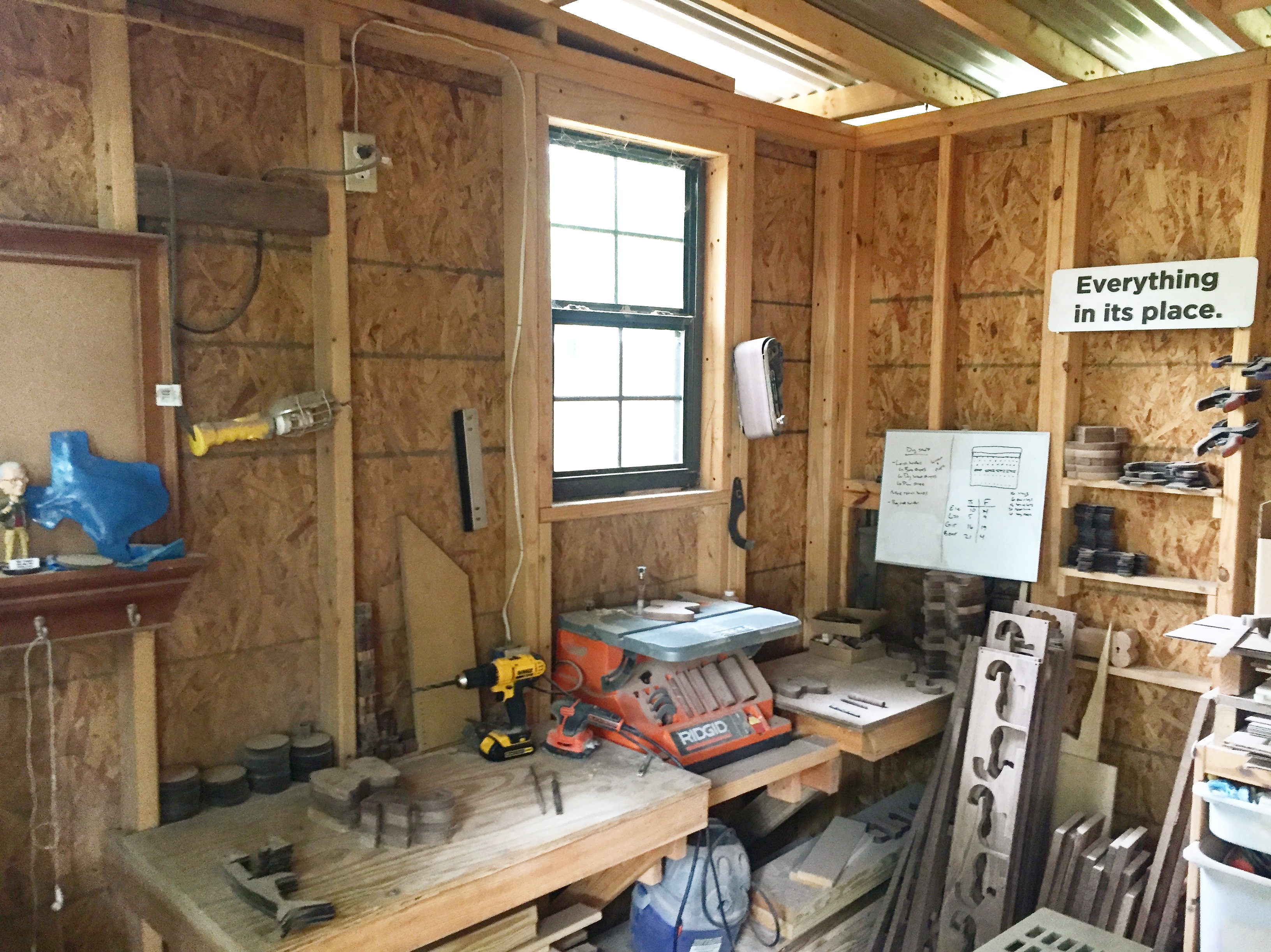

No Comments